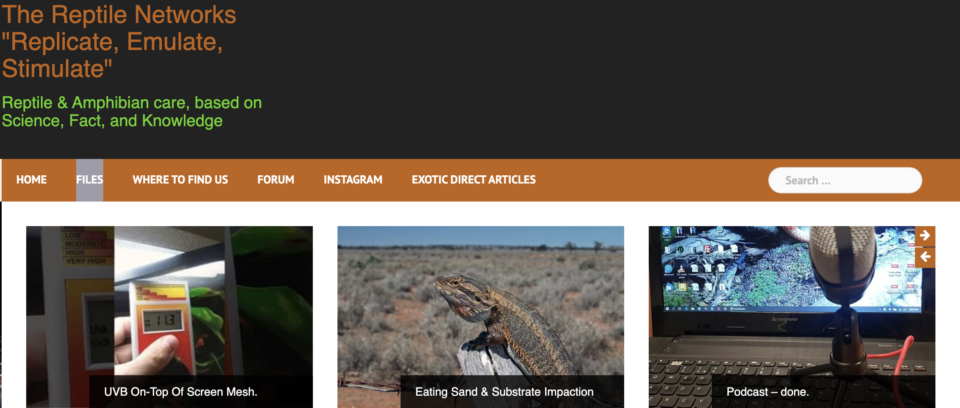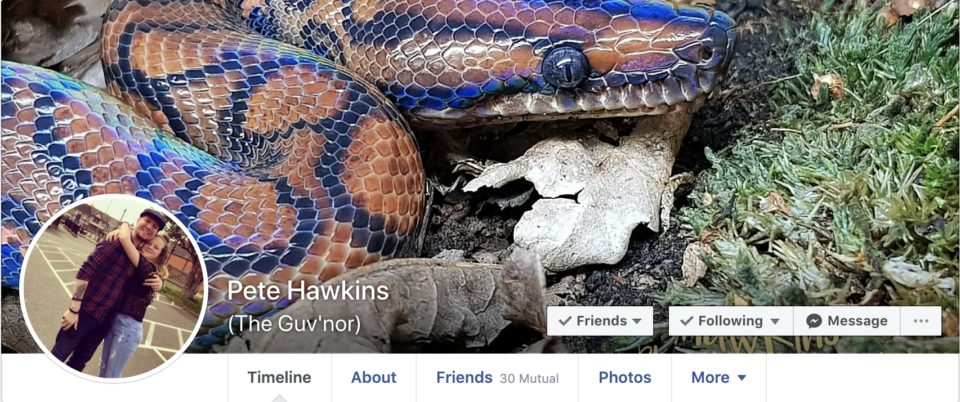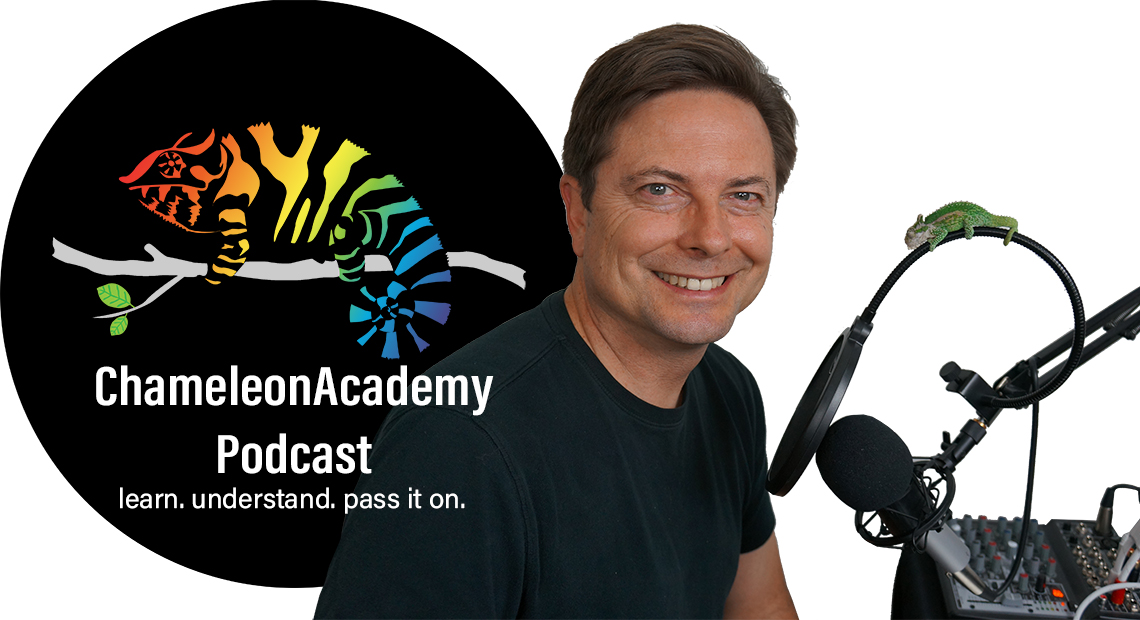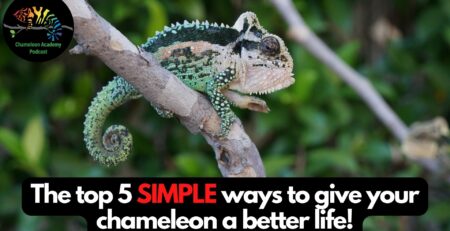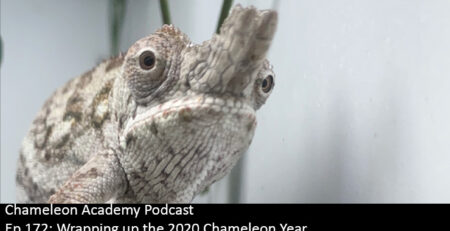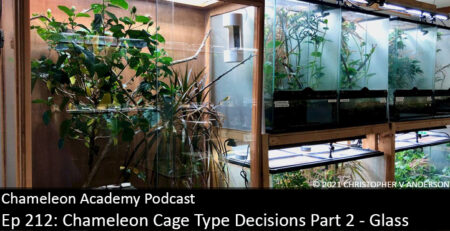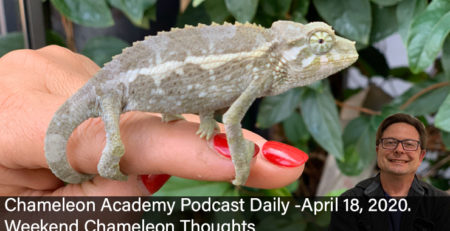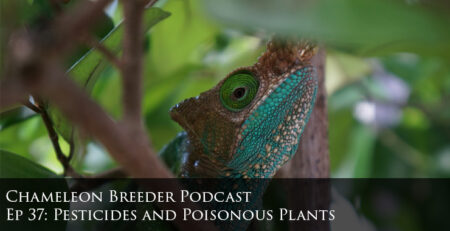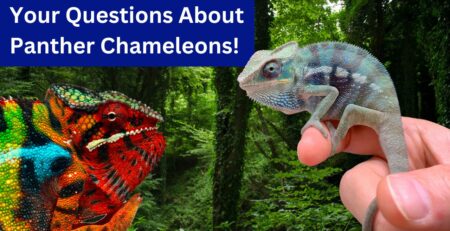Ep 131: Making UVB Work For Chameleons
Listen Here!
There is a lot of information about using UVB with chameleons bouncing around the internet. But how is it in execution? Today I bring you a discussion with Pete Hawkins who has raised a female veiled chameleon with UVB light and completely without dietary Vitamin D3.
Transcript (More or Less)
The whole purpose of providing UVB light is to allow your chameleon to make vitamin D3 naturally through their skin. Although it is common to give D3 through the diet, this is not natural and we can overdose if we give too much. How much is too much is unknown. But instead of researching to figure that out, we are going to focus on researching how much UVB a chameleon needs to do D3 synthesis. As with every exploration there needs to be a starting point. For this starting point I talk with Pete Hawkins who was helping test the Arcadia EarthPro-A supplement which has no vitamin D3. His task was to raise a chameleon completely on UVB with no dietary D3.
Now, I want to give an introduction to what constitutes data in the search for UVB answers. Because there is enormous ambiguity and almost no hard data people in the social media echo chambers have become quite attached to their personal views, which, frankly, are based on nothing more than ideas pulled out of the air. Hard data is very difficult to come by as it takes years to pull together. So, let’s lay the ground rules for what constitutes solid information in the realm of UVB. For us to have a valid test as to whether a certain level of UVB is effective a female chameleon must be raised with no dietary D3 and then lay calcified eggs. That would be the top test as to whether the UVB level was sufficient. And, I am reporting today that we have a data point that fulfills that requirement. It is only one data point and we in the community must continue to test. Although, I will say before I bring on the interview with Pete, I have duplicated his findings with a test of my own. So, like any thing we accept as fact, it must be repeatable. Perhaps after listening in you would be interested in validating the test yourself.
And this is what we need to do to slowly crawl forward. We put together a feasible hypothesis and test it. Pete decided UVI3 was a valid level and proved it out. Building on this I did a test with two pairs of veiled chameleons with one pair being raised up with UVI 3 and one pair with UVI 6 to see if there was any difference. There was none and I am raising up the babies from that test right now. In addition to the test I ran, I validated the test Pete ran.
And what is the significance of these findings?
Well, within our UVB husbandry there are two important levels. The first is the minimum effective level which is the minimum level at which the chameleon can successfully synthesize enough D3 to not only grow up strong, but create calcified eggs. The next level is the maximum safe level. UVB will kill your chameleon. It burns and will produce cancers just like in humans so we do NOT want to give them more than we need to. Between the tests that both Pete and I ran we can tentatively place UVI 3 to UVI 6 between the minimum effective and maximum safe levels for Veiled Chameleons.
Since there was no benefit to increasing from 3 to 6 we should now turn our minds to refining the minimum effective level. Could we get the same results with UVI 2? Maybe UVI 1? And this is where we can grow as a community. Of course, this is where I am placing my efforts and will let you know what I find out!
At this point we experiment more. If this interests you at all then please contact me. The more experiments we have running the better our data. But it is a touchy topic to test. Failure to synthesize D3 results in Metabolic Bone Disease. So anyone working with this should be ready to spend the money for blood tests to verify D3 levels and have an experienced keen eye to identify when things are not working out.
For the rest of the community, thanks to Pete, we know that UVI 3 is a safe level for veiled chameleons to live without dietary D3. I have duplicated that result in two animals so our confidence can grow. It is true that any scientific study would scoff at using three animals as an indication of anything. But, I will say that our community has gotten into the most heated battles being 100% sure of UVB husbandry even with the loudest voices not even having the benefit of a UVB meter so I think we can agree this is a step in the right direction.
So, where do we go from here? I give you no action item. At this point I am just making you aware of what is going on that is pushing us forward. You are welcome to use this information however it most benefits you. And, for my part, I will continue to bring you the latest advancements from every corner of the chameleon world.


